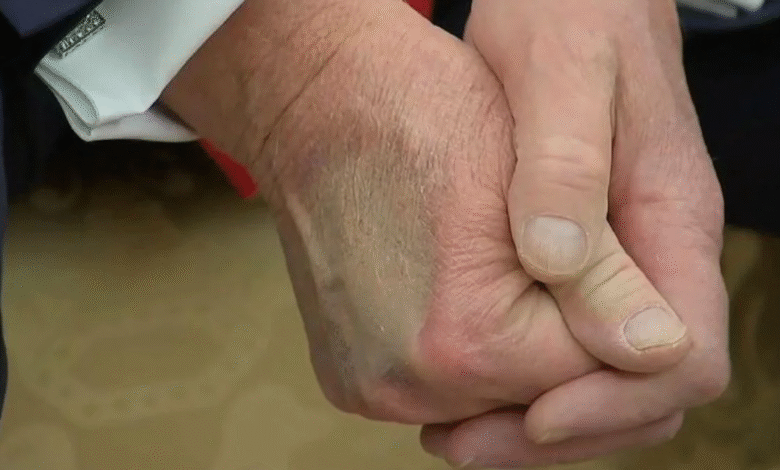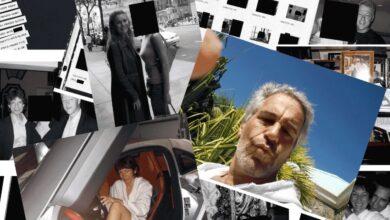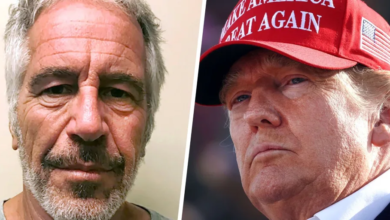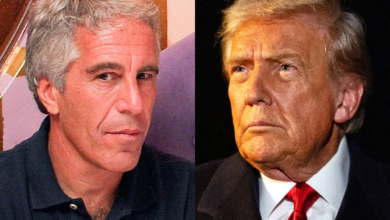Makeup Artist Calls White House ‘Sloppy’ for Trying to Cover Up Trump’s Hand Bruises
Former Apprentice makeup artist reveals sloppy attempts to hide Trump’s hand bruises and raises fresh concerns about his health.

A makeup artist who previously worked on “The Apprentice” questions Trump’s team’s mishandling of attempts to cover up the president’s health.
In an article titled “On Trump’s Hand, It’s Not Just the Blue, It’s the (Apparent) Cover-Up,” the Washington Post revealed that Brandi Pollitt, a Canadian artist specializing in film and television, was surprised by the attempts to conceal the discoloration on Trump’s hand.
Pollitt had an unusual perspective. She studied Trump’s skin in detail while helping actor Sebastian Stan portray a young Donald Trump in the film “The Apprentice” (2024). To achieve accuracy, she had to master every detail of his appearance, from his hands to his complexion, his veins, and his distinctive tan.
This expertise allowed her to spot a problem. The bruises appeared on Trump’s hand in the spring of 2024 and have recently become more frequent. According to Pollitt, the cover-up appears sloppy, as if the makeup had been applied hastily and carelessly.
Criticism mounted not only because the president appeared to have visible bruises, but also because of the mismatched colors used to conceal them. The White House explained that Trump’s bruises were caused by his constant handshakes and aspirin use.
Pullett was frank in her opinion. “How can you be in a situation like this and no one can cover up a bruise? It’s like putting on foundation,” she said.
The Washington Post pointed out that in politics, it’s often the cover-up, not the problem, that attracts attention. The Post emphasized that a bruise is not a crime. However, the cover-up attempt drew scrutiny, particularly because it touched on long-standing debates surrounding Trump: his skin, his hands, and his health.
On the set of her latest project, “Star Trek: Starfleet Academy,” Pollett explained that covering a bruise should be relatively simple. “Use a color wheel,” she explained. “The opposite color will mask the bruise.”
She also explained why successfully covering a bruise requires expertise. “Skin has tones. You can see blue in veins and red in capillaries. There are also moles and natural marks. It’s about layering the makeup so that the covered area blends in with the rest of the skin, not painting it a single solid color.”







